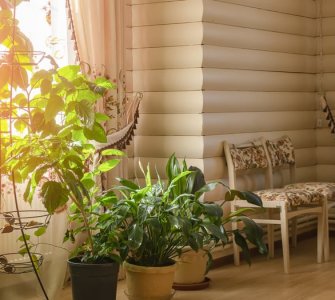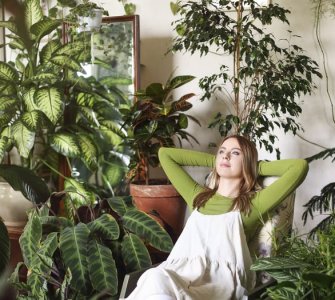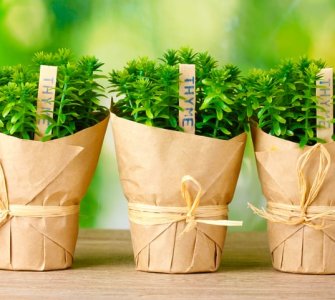Every now and again, I like to try something completely different just to see if it will work. Most of us know how incredibly valuable and almost magical saffron spice is, so I thought I’d see if I could grow some of my own ‘red gold’ as an indoor plant. Although I don’t want to get my hopes up too much because it seems too good to be true to be able to produce saffron as an indoor pot plant, from the research that I have done, the process appears straightforward.
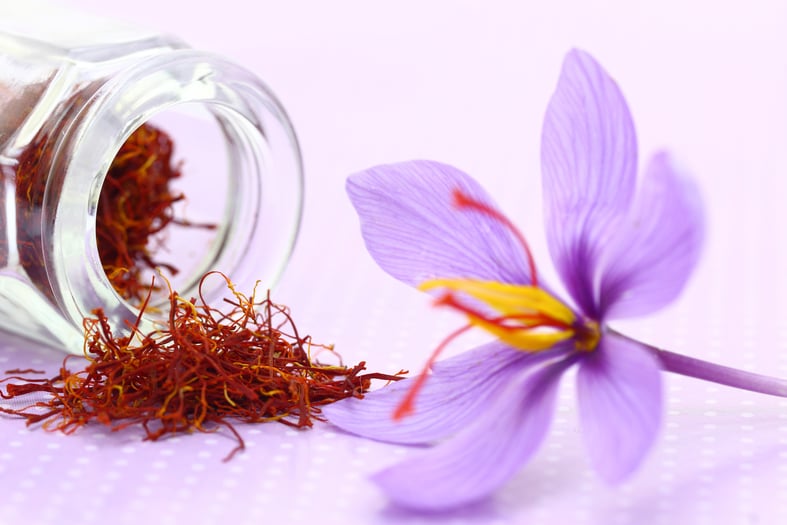
Late summer and early fall are the best time to plant saffron. The plant grows well indoors as temperature and watering can be carefully controlled. Saffron blooms in late fall, and each flower produces three threads of the valuable spice. Saffron requires a well-draining soil mix.
It turns out that my timing for the saffron growing experiment was perfect, as the plant keeps to a pretty strict seasonal blooming. Of course, the precious red threads will be the ultimate prize, so fingers crossed that I will be able to coax mine into bloom before the end of this year.
Table of Contents
How Hard Is It To Grow Saffron?
Growing saffron indoors is surprisingly easy! There’s nothing too daunting about it, and much of the costliness of saffron is related to the minute quantity each flower produces and the labor-intensive process of harvesting the tiny threads. Of course, that won’t be a problem in my home as I only planted ten corms this year, as it is strictly an experiment to see if I will manage to grow it indoors.
Saffron is a normal crocus plant of which there are plenty of varieties. I bought my corms online as I wanted to be absolutely sure that I had the correct type. I have heard some really disappointing stories about excited gardeners who thought they had purchased Crocus sativus bulbs (the one that produces saffron spice), only to find they ended up with Autumn Meadow Crocus!
Saffron is surprisingly hardy and pest resistant. It is also a great indoor companion plant to keep pesky aphids away from my precious roses! The only challenge with saffron is that it requires a lot of patience, and I am super excited to catch a glimpse of my first purple bloom – I’m hoping I will be one of the lucky indoor growers and get a few flowers at the end of fall.
How To Grow Saffron Indoors
Once you have your corms (which you have double-checked are Crocus sativus), plant them at least 2-4 inches deep and 3-4 inches apart in your container. If you are hoping for flowers the same year that you start them, it is best to plant them in spring or summer, although there is no guarantee that your saffron will reward you so quickly.
Plant your corms with the pointy side facing upwards. If you are planting in spring or summer, water them well just after you have planted them, but then withhold water until the weather becomes cooler. Roots will only form in the autumn, so your precious treasure is not thirsty during the summer months; they are asleep.
Saffron planters must be placed in areas where they receive at least 5 hours of sun daily. Direct sunlight or light shade is acceptable for the rest of the time, but it must stay in a well-lit area. Remember that saffron originates in Mediterranean regions and is a sun-loving spice.
You may be rewarded in the year of planting with some flowers. The spice must be harvested when the weather is sunny, and the flowers are fully open. Carefully pull the three red threads out of the flower.
The precious red threads, or stigmas, must then be placed on a paper towel in a warm, dry spot where they won’t blow away! Let them dry completely, and then store your valuable stash in an airtight container.
Some growers like to remove the entire purple bloom to encourage the plant to send up another flower. I don’t think I will be so confident this first season and will just want to enjoy the beautiful purple blooms if I get some!
How Often Do You Water Saffron?
Saffron is not a good option for anyone who loves watering their indoor plants. It can be very hard not to add some love to encourage the plant to appear from underground, but saffron cannot tolerate wet, damp conditions, and the corms are likely to rot if they are overwatered.
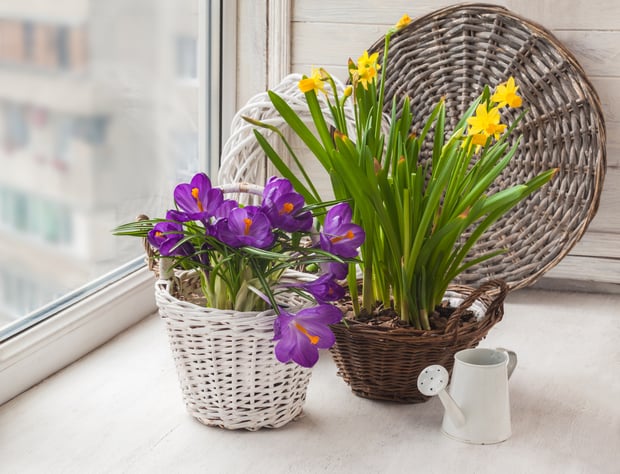
Unlike parsley or thyme, growing saffron is a game of patience. Choose a sunny spot for your saffron container, but don’t expect a lot of vibrant plant action from it.
During the growing season, while it has flowers and during the cooler months, saffron must be watered without soaking the soil, but when the thin green early spring growth dies back, it is a signal to stop watering as the bulbs enter dormancy.
When the plant pushes up the distinctive flowers in autumn, that is your signal to resume watering the plant.
How Many Times A Year Does Saffron Bloom?
The high cost of saffron has a lot to do with it only blooming once each year and each flower producing only three tiny threads of the precious spice. So you probably won’t be able to start planning your early retirement after the first few seasons of growing, although, under the right conditions, the corms multiply quite quickly.
What Soil Is Suitable For Growing Saffron?
Saffron can do very well indoors, especially in areas that receive a lot of annual rainfall, since you can limit the amount of water it receives. Saffron goes into a total dormancy phase during summer– this is when corms are usually sold and planted.
One of the essential factors when planting saffron indoors is planting it in suitable soil where the corms will thrive. Saffron needs fast-draining, rich soil. Like all bulbs, letting them sit in damp conditions may result in rot. Commercial all-purpose potting mix works fine, so long as there are also plenty of drainage holes on the base of the container.
To encourage good drainage, many saffron growers add a 2-inch layer of course grit or sand on the bottom of the planter. Top up the container with rich organic soil and let nature do the rest. Do not add fertilizer as it can encourage leaf growth rather than the production of flowers.
It is not only the soil that is important when planting your precious corms, but also the container itself. A ceramic or clay pot that is at least 8 inches deep works well. These materials are more breathable than plastic or metal. I used a large rectangular planter to keep my flowers together and give them enough space.
How Much Saffron Do You Get From A Single Plant?
It takes 4000 saffron flowers to get 1 ounce of the precious red spice. Each corm only produces a single flower, and each flower contains three long red threads of saffron.
Propagation of saffron takes place by dividing the underground corms during the dormant phase after the green grass-like growth has died back and the plant disappears below the ground.
How Long Does Saffron Take To Grow Indoors?
The time saffron will take to bloom depends on when it is planted. Saffron flowers once a year in autumn before moving into a period of dormancy underground during summer. During the ‘winter’ stage, the corms should be kept in cool temperatures in the coldest room in your house.
If you only plant your corms in spring or summer, like I did, you can stay on the lookout for blooms during the first fall, but if you were a little late, they might skip this year and only bloom next fall. If you are lucky, flowers can appear from the dead-looking corms in as little as 6-8 weeks! While I’m a long way from becoming a spice lord, a journey of a thousand miles starts with a single step, and my saffron-growing journey has begun!
